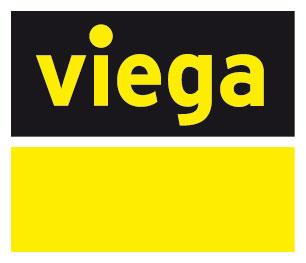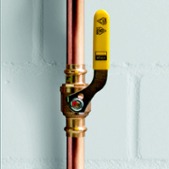Have you ever received a piece of mail with an envelope tucked in the back instead of sealed? Perhaps the envelope’s contents arrived damaged, or simply fell out while in transit, without this added layer of protection.
While a sealing element for a pipe fitting may look much different than an envelope, the thought process is the same. A fitting needs both mechanical strength and a way to prevent the leakage of fluids. A sealing element makes sure no media (whether it’s water, air, etc.) passes through a pipe connection. This makes it a crucial part of how any mechanically attached pipe fitting is installed.
(While a sealing element is quite similar to an O-ring, there is one big difference: O-rings are replaceable, and sealing elements are permanent once pressed.)
Depending on your application, there are many types of sealing elements that could be beneficial. Three of the most common are EPDM, HNBR and FKM. As a provider of these three types, we’ll break down what each option means.
An Introduction to the Three Sealing Elements
What Is EPDM?
Ethylene-propylene-diene monomer rubber (EPDM) is a synthetic, cured all-purpose elastomer recognized for its excellent resistance to chemicals and other harsh environmental conditions, as well as its shiny black color. (At Viega, we ask that each sealing element is dyed.) With operating temperatures that range from 0℉ to 250℉, the EPDM sealing element is suitable to any type of water application (hot water included), as well as compressed air and ketones.
What Is HNBR?
Yellow in color, hydrogenated nitrile butadiene rubber (HNBR) is a specialty-purpose elastomer that boasts a great deal of strength and retention in the face of heat, oil and chemical exposure. HNBR sealing elements are primarily geared toward gas applications, from natural and propane to mixed and manufactured gases, along with oils and lubricants.
What Is FKM?
Fluoroelastomer (FKM) is a specialty-purpose elastomer that is dull black in appearance. In combination with excellent resistance to chemicals and environmental influences, FKM is also characterized by a resistance to extreme spikes in temperatures (up to 356℉) for 24 hours or less. These qualities make the FKM sealing element suitable for industrial environments where there are harsh, corrosive conditions.
How Long Do Sealing Elements Last Anyway?
People tend to assume that sealing elements will wear out and need to be replaced. This is a myth we want to debunk. Unlike O-rings, sealing elements offer a significantly longer life span — a timeline that is dictated in part by their unique application.
The longevity of a sealing element has a lot to do with the dynamics of its operating parameters. Essentially, it functions on an exponential curve. A sealing element that operates at the peak of its range may have a shorter life than one that operates in more moderate conditions.
At Viega, we are just as confident in the quality of our sealing elements as we are in our fittings. That’s because we pair quality design and manufacturing processes with accelerated weathering tests to ensure sealing elements perform as intended well into the future.
Operating within our approved conditions, our sealing elements carry the same warranty period as the product line they are installed in. For example, our standard ProPress fittings are backed by a 50-year limited warranty. We stand behind the ability of our sealing elements to meet these same demands.
Have other questions about sealing elements or Viega press fittings? Contact our sales team for more information.









